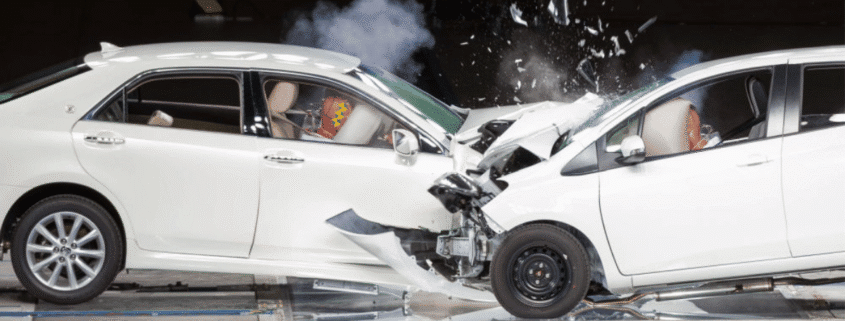Head-On Collisions: Causes, Injuries, and Your Legal Options
Head-on crashes happen when two vehicles strike front to front. They cause severe head, neck, chest, and leg injuries. In Utah, PIP pays first, but you can sue once thresholds are met. Fault is proven with reports, lane evidence, and data.
When you have been hit head-on, you are most likely scared, hurt, and don’t know what to do next. It is these types of crashes that pack the most force because the impact comes straight at you. Injury symptoms can appear immediately in some cases. In some cases, it can take several hours or even days. In Utah, insurance has special rules and strict deadlines that can affect your claim. This guide keeps things simple and practical.
You will learn why head-on crashes happen, common injuries, how fault is proven, what shapes settlement value, and when to call a car accident attorney in Utah. We will point to trusted data for safety facts and Utah law for the rules that matter. Your first job is to get medical care. Your second is to protect your rights with solid evidence and smart next steps.
Key points you should know
- Frontal impacts lead U.S. crash deaths.
- Seat belts cut serious harm by about half.
- Wrong-way driving kills about 500 yearly.
- Utah PIP starts coverage at three thousand.
- You must meet the threshold to sue.
- Fault can be shared under Utah law.
- Four years is the usual suit deadline.
- Keep records from day one of care.
- Photos and lane marks help prove fault.
- Dash-cam and car data can help, too.
Head-on collision injuries and survival basics
A frontal strike will throw you forward. Injuries that are commonly sustained include concussions, brain injuries and whiplash. Pain may be delayed. Look out for headaches for these symptoms that include nausea, dizziness, memory issues, numbness, breathlessness, and stomach pain. A timely diagnosis is crucial. Make sure you follow your doctor’s plan.
The best way to ensure your survival is by wearing a safety belt during a collision. The data on public health shows that seat belts are able to reduce fatalities and serious injuries by roughly half. Vehicle design helps, too. Latest research shows that cars with good frontal ratings have less fatality rates. Thus, driving a well-maintained, crash-tested automobile makes a significant difference. Increasing speeds reduces the chances of surviving a collision, so the odds of surviving a collision are greatly reduced.
Head-on collisions – how to prove fault?
To prove a head on collision, you need clear and simple facts that show where the cars were and what they each did.
Build a clean evidence file
- Police report number and officer name
- Photos of lane lines, skid or yaw marks, debris field
- Photos of both cars showing crush patterns
- Dash-cam or traffic-cam footage
- Names and contacts for witnesses
- Medical records from the first visit onward
- Repair estimates or total-loss letters
Modern cars often store speed, throttle, and brake data on the event data recorder. Utah law addresses who can access that data and how. A lawyer can help secure the data, along with phone records if distraction is suspected. This kind of proof makes it harder for an insurer to guess or shift blame. In Utah, comparative negligence applies, so pinning down the facts keeps your share of fault fair.
Utah insurance rules, thresholds, and deadlines that shape your claim
When it comes to auto insurance, the state of Utah is a no-fault state. Personal Injury Protection, or PIP, pays first for medical costs, subject to policy limits. The minimum required PIP medical benefit is three thousand dollars per person.
To seek pain and suffering from the at-fault driver, you must meet Utah’s injury threshold. Most people meet it by reaching at least three thousand dollars in reasonable medical expenses, or by having a qualifying serious injury such as permanent disability or disfigurement.
There is also a modified comparative negligence system used in Utah. Generally, you can recover money reduced by your share of blame if you are less than 50% at fault. A recovery is not possible if more than 50% of the fault lies with you.
Generally, injury lawsuits resulting from car accidents must be filed within four years after the accident. Wrongful death cases are usually two years. Missing a deadline can end your case, so mark your calendar and speak with a lawyer early.
Settlement amounts and what really drives value
The average settlement amount for a head on collision is not known. The value of a head-on collision depends on a number of factors, including fault, injuries, medical treatment, limits for permanent care, lost income and future costs.
Utah’s PIP is first to pay, and then you can file a liability case once you reach the threshold of injury. A strong file includes a clear timeline of medical treatment and information about the impact that injuries had on work, sleep and everyday tasks. Photos of scars or assistive devices can help illustrate the real impact.
Insurance companies also consider future needs. This can include the cost of surgery, therapy and devices as well as time away from work. Comparative negligence may reduce the amount you receive. Each piece of evidence that proves the other driver drove in the wrong direction or crossed the line is important.
When needed, a seasoned car injury attorney in Utah can bring together experts to help with crash reconstruction and life-care planning. This kind of preparation can lead to more successful settlement negotiations.
Hire the best Utah car accident attorney: local help that changes outcomes
Paperwork, phone calls, and pain can pile up fast after a head-on crash. A car accident lawyer Utah drivers trust can take the heavy lift off your plate. Local lawyers know Utah’s PIP rules, the injury threshold, the four-year deadline, and how comparative negligence works. They also know the judges, the adjusters, and what a fair offer looks like in our courts. That home-field insight saves time and prevents costly mistakes.
A good car accident attorney in Utah will gather police reports, photos, and black-box data, then line up doctors and other experts to prove what you are going through. While they handle the claim, you can focus on care, family, and work. If the insurer tries to blame you, your lawyer can push back with facts and keep the talks on track.
Cockayne Law Firm and Chris Cockayne
Chris Cockayne leads a Utah-based team that keeps clients informed and cases moving. From the start, they build a clean record with reports, scene photos, witness statements, and medical proof.
The team understands Utah’s no-fault system and helps clients clear the injury threshold so a full claim can move forward when the law allows. They prepare files as if a trial could happen, which often strengthens settlement talks.
If fault is disputed, they can pull event data, seek phone records when appropriate, and bring in crash-reconstruction experts to explain lane position and closing speed. Communication is plain and steady so you always know what is next. Many clients say the biggest relief comes when the firm takes over the calls and forms.
If you need a car accident attorney Utah, consider a free case review with Cockayne Law.
Final thoughts
In the resulting wake of a head on collision, you can take back control of your life. Please follow your doctor’s instructions, keep good records, and see a doctor as soon as possible. You can avoid missing a key step by understanding how Utah’s PIP works. Also including the thresholds, fault rules and deadlines. Solid evidence ensures that the value and blame are both fair.
Consult a car accident lawyer who deals with these cases every day if the process seems overwhelming. Cockayne Law, for example, can collect proof, handle insurers and protect your rights, while you concentrate on getting better.
FAQs
Do head-on collisions have a high survival rate?
There is no single fixed rate. Survival depends on speed, belts, vehicle safety, age, and health. We do know frontal impacts account for the largest share of occupant deaths, and seat belts cut serious harm by about half.
What is Utah’s injury threshold to step outside no-fault?
Most people meet it with at least three thousand dollars in reasonable medical expenses, or by having a qualifying serious injury such as permanent disability or disfigurement. Once met, you may seek pain and suffering from the at-fault party.
How long am I allowed to file suit in Utah?
It takes four years for a car accident to cause injury. An action for wrongful death must be brought within two years. Consult a lawyer if your exact time limit changes in certain cases.
How can I prove that another driver caused my accident?
Compile the police report, pictures of tire marks, dashcam footage, witness names, and video footage. A modern car has data that shows speed and braking. This can help your case. An attorney can help to secure the data and any required phone records.
Is it a good idea to contact the other driver’s insurance company?
Until you speak with a lawyer, share basic contact and policy details. Recorded calls can be used against you if you guess or misspeak. A local firm can handle detailed talks while you heal.









